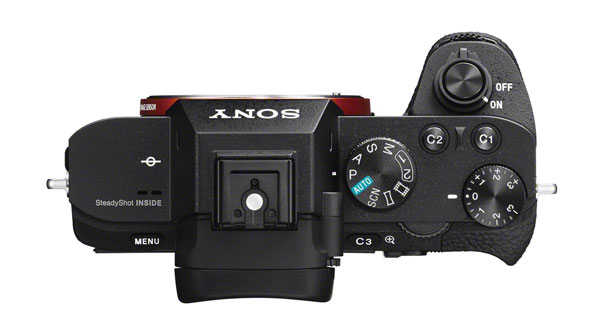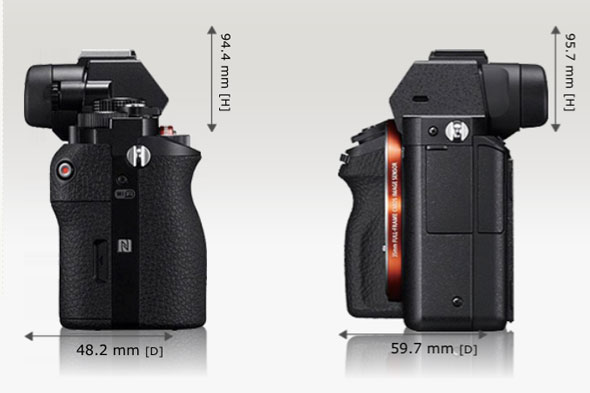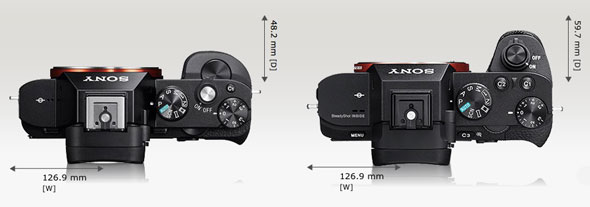We’re not yet at the second Sony Alpha A7 generation, and look what Sony comes up with: the Alpha A7 II, a full-frame mirrorless with 5-axis image stabilization, the first of it’s kind in the full-frame market which is where the hopes of the world’s three leading camera makers lie. The A7 II embodies the further fine-tuning of an already highly successful lineup that alters the face of digital imaging technology. No doubt its image stabilization will perform as reliably as Olympus’, meaning even if you have shaky hands now due to excitement you’ll be able to capture a perfectly clear shot with an 1/8th of a second exposure, or even slower.

Instead of the 24MP I’d have preferred the Sony A7S’ lower 16MP 12MP count, but Sony knows perfectly well what they’re doing. The 5-axis stabilization is a huge boost to low-light photography. No one’s hand is really stable. Optical image stabilization physically counteracts the small hand movements which inevitably occur when holding any camera without a tripod. Will be interesting to see how the A7 II compares to the current low-light king, the Sony A7S (Amazon / B&H Photo / Adorama / eBay).

The new system, likely licensed from Sony’s strategic partner Olympus, corrects movement along five distinct axes including shifts in the left/right and up/down directions as well as three angular movements pitch, yaw and roll. These last three are caused when the camera tilts up or down; swings left and right; or rotates clockwise or anti-clockwise in your hands. Sony claims up to 4.5 stops of correction, which means you’ll be able to hand-hold the camera using shutter speeds up to 4.5 stops slower without visible camera shake.

What else is new? A more advanced “lock-on AF” feature optimizes focusing on the subject based on its size to further increase subject tracking ability. Sony also claims the A7 II is ready to shoot 40% quicker than current models from the moment it is switched on. Plus the ergonomic refinements, including a redesigned grip with an enlarged shutter release button placed further towards the front of the camera. The new grip looks much more like that of a typical DSLR. This too results in a reduction in camera shake.
Aside from the bulkier build, the camera’s design, form factor and controls largely remain the same. If this is still not good enough for you, there will be a rumored next Sony A9 generation in early 2015, most likely with an cosmetic overhaul of the body. Those familiar with Sony’s design philosophy know once they establish a platform the looks largely remain the same.

For now the A7 II will be available in Japan, so maybe it’s more of a bridge camera to test the waters for a globally marketed A9 with all the bells and whistles we dream of. It will be too early for Sony’s newly developed sensor, using a new technology called APCS (Active Pixel Color Sampling) that allows each pixel to sample RGB data individually, which eliminates the need for color filter arrays and complex debayering processes.

Because of this technology, Sony can use roughly 1/3 of the amount of pixels to output an image with the same resolution as a much more pixel-dense sensor of the same size. This also means that the individual photosites can be much larger, which theoretically will allow for tremendous gains in low-light ability and dynamic range, depending on how the sensor data is processed.
And then there’s Sony’s curved sensor technology, allowing for a whole new revolution in the design of more simple yet no less sophisticated lenses. You’ll most likely find these new technologies first in smaller cameras and smartphones. But clearly Sony is redefining digital imaging technology, one can only reckon how the Canon and Nikon strategists who plan for the decades ahead are panicking.
For now it’s certainly an important camera, this A7 II, first full-frame mirrorless with serious image stabilization.
BTW, Adorama has a Sony A7 trade-in promotion.


